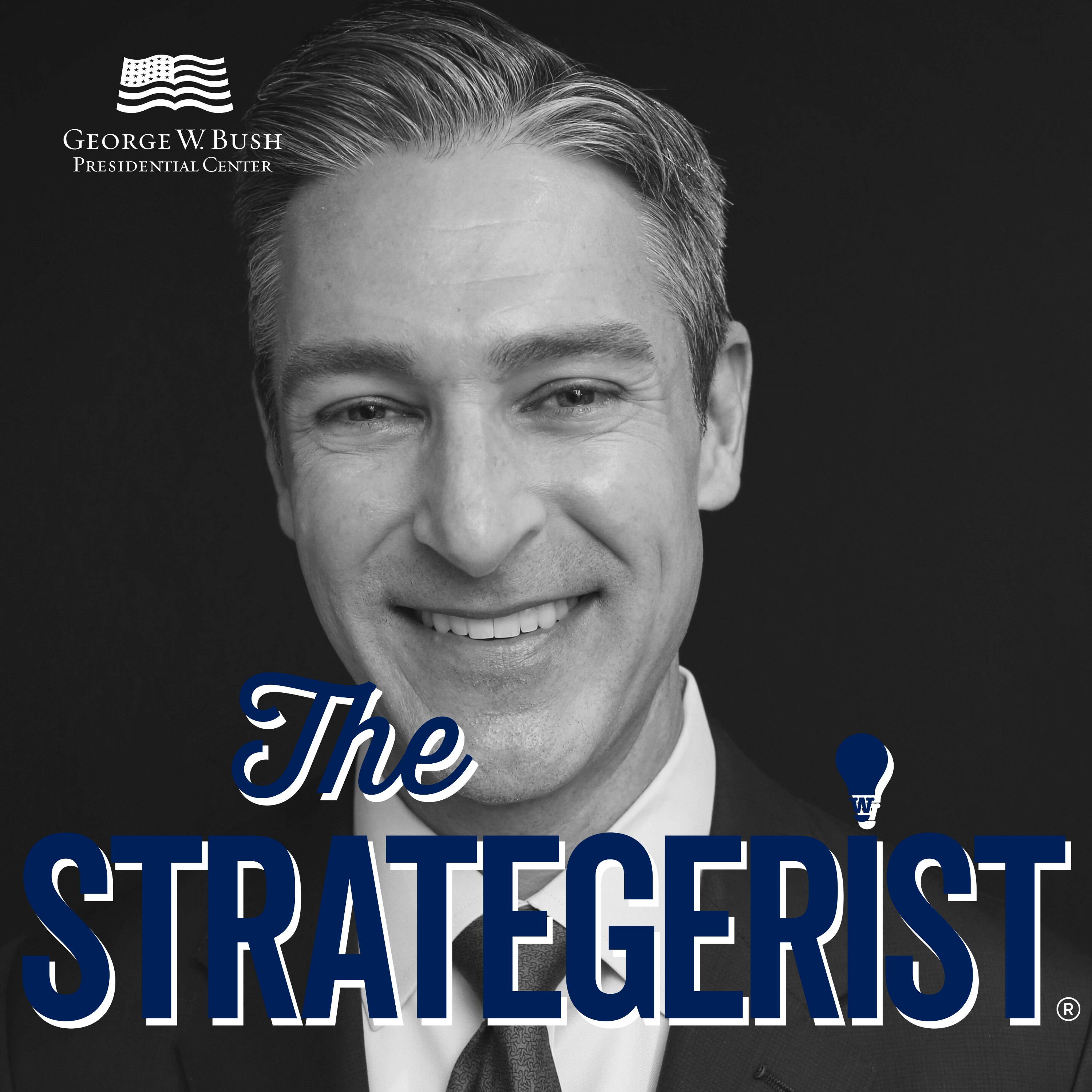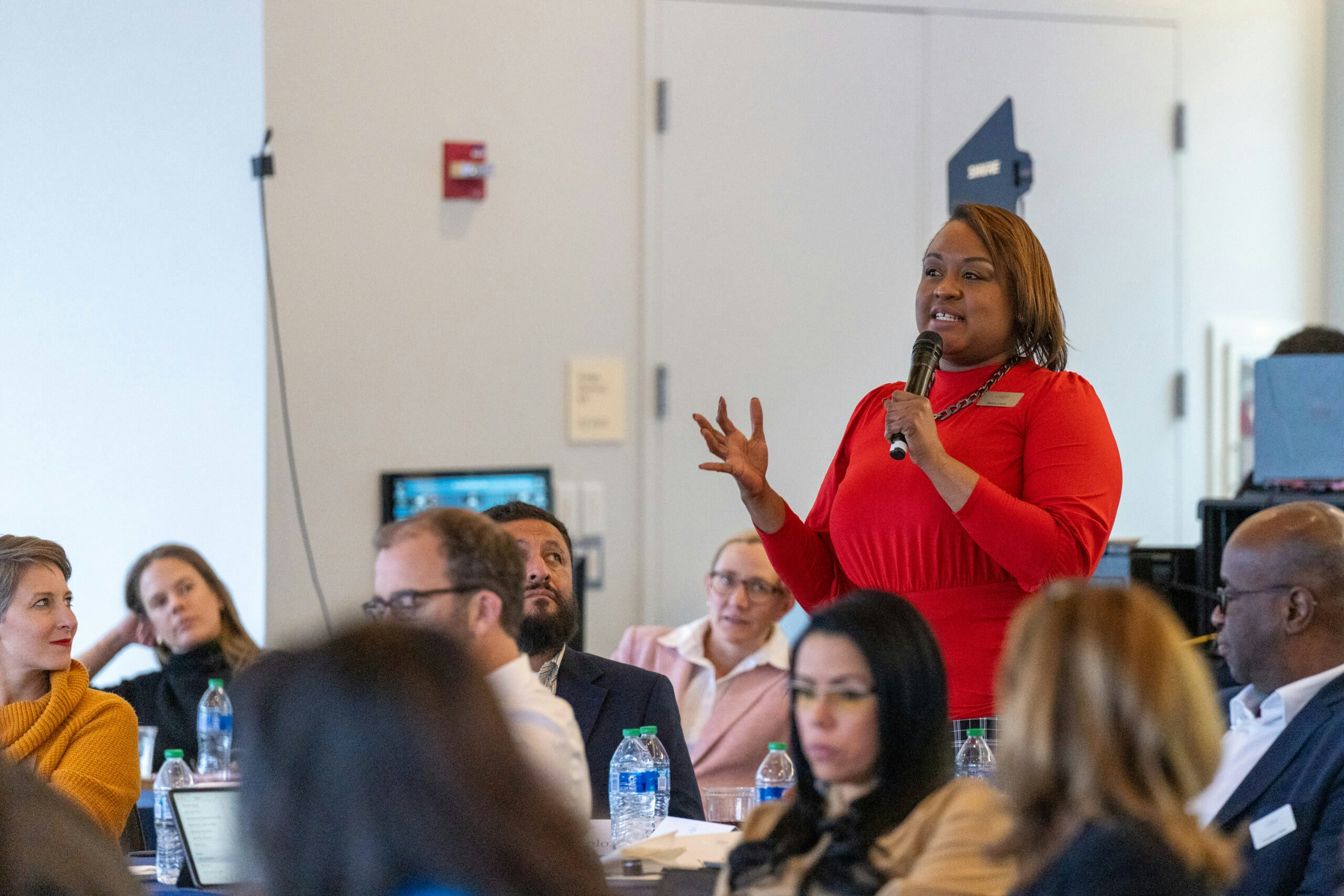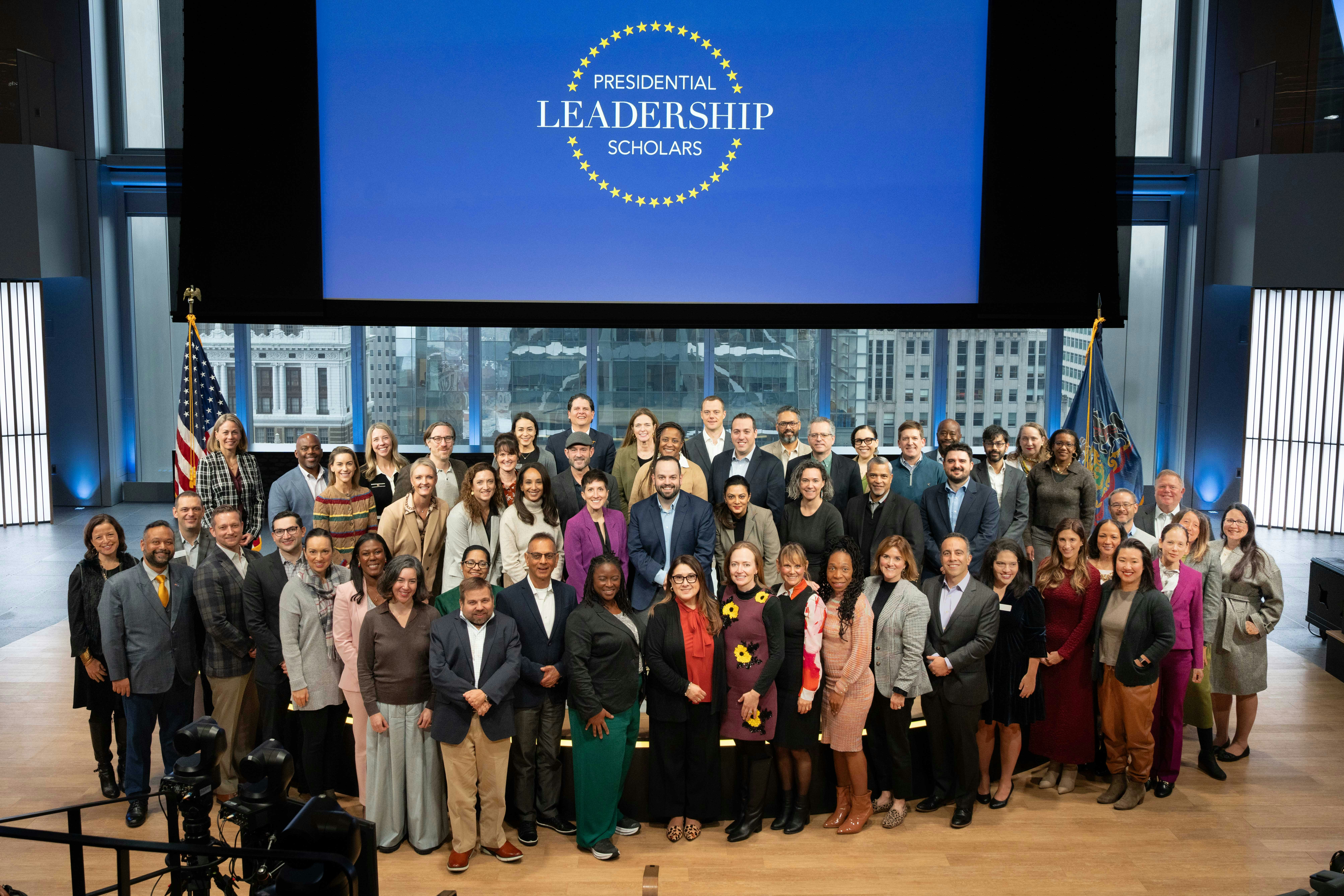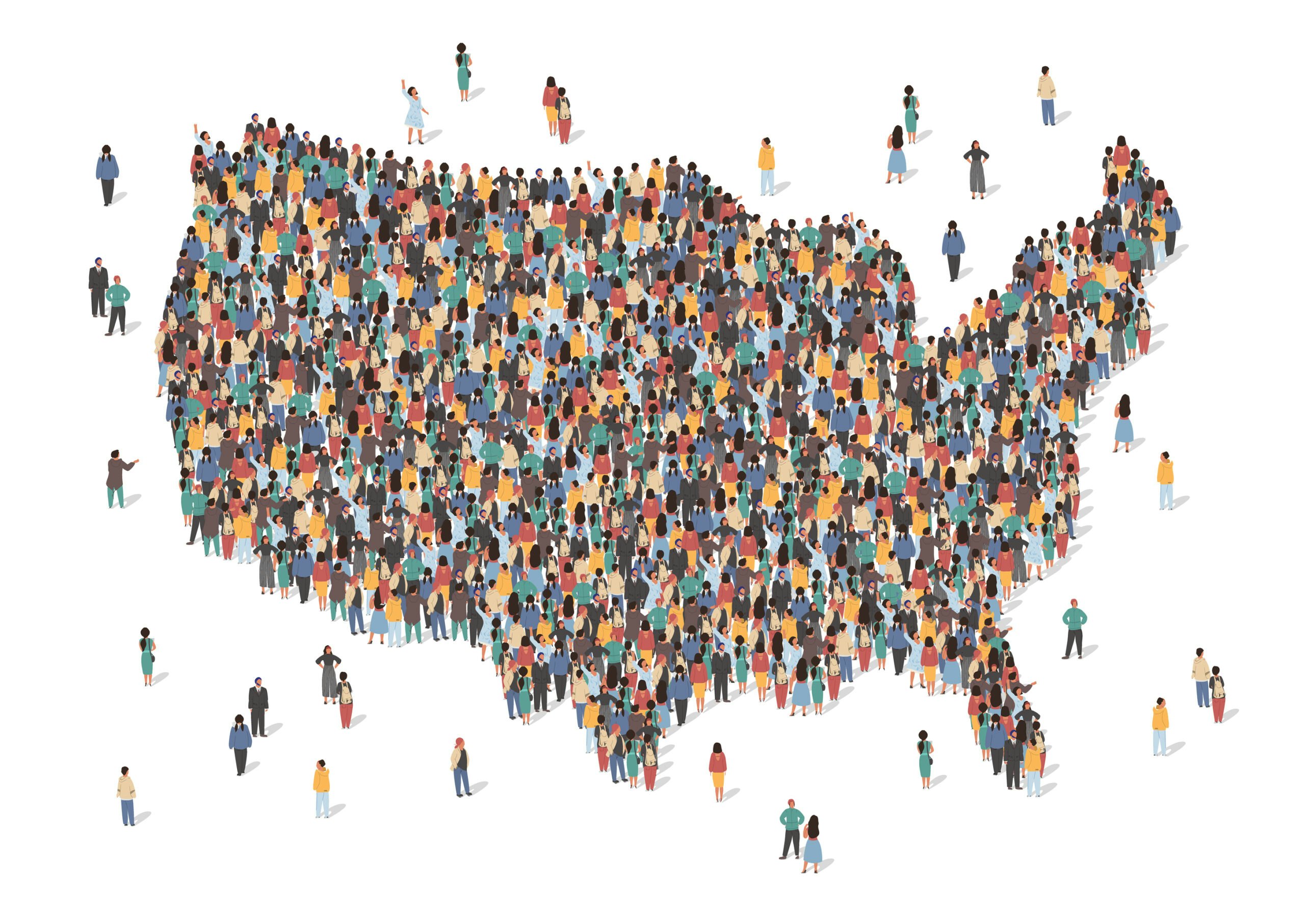Jamal Greene, Dwight Professor of Law at Columbia Law School, and Greg Lukianoff, President and CEO of Foundation for Individual Rights in Education, explore the freedom of expression and the evolution of First Amendment rights on college campuses.
Jamal Greene serves as Dwight Professor of Law at Columbia Law School, where he teaches courses in constitutional law and the First Amendment. The Yale Law School graduate also serves as co-chair of the Facebook Oversight Board. Greg Lukianoff is President and CEO of the Foundation for Individual Rights in Education. The former ACLU attorney also is the co-author of The Coddling of the American Mind.
The pair joined in a discussion about freedom of expression on college campuses with Lindsay Lloyd, the Bradford M. Freeman Director of the Human Freedom Initiative at the Bush Institute, Chris Walsh, Deputy Director of the Human Freedom Initiative, and William McKenzie, Senior Editorial Advisor at the Bush Institute. A video of their conversation is included along with this text version, which has been edited only for length and clarity.
How do you each define freedom of expression?
Greene: Freedom of expression is the ability to decide for one’s self what one wants to say, what one wants to believe and be able to communicate that with others. That’s a very broad definition.
There are lots of ways in which we see limitations on freedom of expression that sometimes might be appropriate. But it’s important to think about it broadly, to think about it as taking a lot of different forms, and to think about it specifically within the context of human beings’ own ability to define for themselves what truth is.
Lukianoff: People started saying “freedom of expression” several decades ago in part because when people would say “freedom of speech,” that was mostly about actual talking and about expression of opinions. People started moving towards the term “freedom of expression” because it became very clear that acknowledging the expressive element of what you wear, what signs you carry, what arm bands you wear was a way of making the point that a lot of what we think the founders would’ve thought of as freedom of speech is much broader than just spoken words.
Greene: To broaden this beyond the United States, the international human rights regime has thought that the term “freedom of expression” is broad enough to encompass art, symbols, writings, and any number of things that might be expressive that aren’t specifically the spoken word.
In your opening comment, Professor Greene, you used the word “limitations.” Do you feel that free speech is being restricted or limited on college campuses and in academia?
Greene: I do think it’s limited on college campuses and in academia. It’s limited in that colleges are in the business of educating.
Part of education requires curating what students are exposed to and trying to design a curriculum for them to learn, to be democratic citizens, to be able to persuade others of their ideas. It’s not inherently a public square. Administrators and faculty members make decisions about what speech to allow and not allow in a classroom. And in admissions decisions and deciding who’s on the faculty and deciding what we teach, we limit speech all the time on university campuses.
The question gets at something deeper, which is, do students feel free to express themselves on campus? You look around the country and listen to what students are saying, students in many settings don’t feel that freedom. The more interesting question is, are there circumstances under which speech has to be fully free on campus?
Mr. Lukianoff, what’s your take on that?
Lukianoff: I’ve been defending free speech on campus for 21 years. I specialized in First Amendment law, working at the ACLU, in law school, and studying the history of freedom of speech in Tudor England. By 2001, I was surprised at how easy it was to get in trouble for what you said on a college campus. Although I’ve seen ups and downs, I’ve never seen years as bad as the last two.
2020 was when we saw the greatest number of attempts to get professors professionally sanctioned. Threats came from the right and left, as they always do, but just more of them. We [the Foundation for Individual Rights in Education] have a database of 537 (and growing by the day) examples of attempts to get scholars sanctioned for what they said in the last seven years. It used to be that I had never heard of a professor getting fired for what they said or taught if they were tenured or if it was within their research. I’ve seen 28 cases of that just since 2015. And 2020 was the worst year with 132 attempts.
The second worst year, 2021, had 111 attempts, and that doesn’t count students. Most of the cases we deal with are students. It’s just oftentimes harder to find those incidents because those are much easier to brush under the rug. So, I’m very concerned about the situation on campus.
There have been some bright spots. The number of speech codes have gone down after literally dozens of lawsuits against universities. But when we polled 37,000 students last year, some students felt more free to talk than others.
The acceptability of violence in response to a speaker you didn’t like was much higher than we expected. I have been worried throughout my career, but it’s been a particularly bad couple of years.
Mr. Lukianoff, you’ve written about trigger warnings. Can you explain them and how they manifest themselves on college campuses?
Lukianoff: Trigger warnings have almost more symbolic value than anything else, but people who believe in them really believe in them.
Trigger warnings originally came from a very sensible context. It was usually talking about sexual abuse or sexual assault. This idea started on campuses in the 1990s and got to the internet during the 2000s. Sites would talk about sexual assault, for example, and they would say, “Trigger warning, there’s going to be a graphic explanation of an assault.” By 2012, the warnings were for a huge number of things.
My co-author [on The Coddling of the American Mind] Jonathan Haidt and I get misinterpreted on our point about trigger warnings all the time. Our argument is not that trigger warnings are silly or that people are spoiled if they request them. It’s that there’s no evidence they help.
There have been many studies on trigger warnings, and there are mainstream psychological reasons for thinking they might be harmful. A couple of studies show trigger warnings can increase anxiety. But none of the studies consider whether trigger warnings put professors in the difficult position of having to guess what they’re allowed to teach.
It’s become a major symbolic issue, and these are very popular on campus. But the research contradicts it.
Professor Greene?
Greene: I find myself unable to get especially worked up about trigger warnings. I get the symbolic value of talking about it. I get that it bothers a lot of people. If there’s evidence that it’s harmful or preventing people from talking about bonafide topics, that’s important to know. But if the biggest worry is that people are giving warnings before they talk about sensitive topics, then we’re not in too much trouble. There are probably other issues that are more important.
Lukianoff: The worry is that it’s causing people to avoid important topics. And this is something that Jeannie Suk Gersen, a Harvard law professor, pointed out way back in 2015. Law professors are shying away from teaching the law relating to sexual assault — for example, rape law — because it’s too triggering for students and they received complaints. Around the same time, seven professors signed an anonymous letter saying the same thing as Professor Suk Gersen.
The expectation that it’s on the professor to make sure that someone isn’t triggered by what’s in class is leading to self-censorship. When you have a situation where people are afraid to teach rape law, for example, which we covered in great detail when I was in law school, the people who suffered the most from that are victims of rape.
I do think there are deeper implications to why you should be concerned about trigger warnings, particularly when professors are saying it’s encouraging them to avoid topics that students need to know about.
Greene: My sense is that we’re a good distance away from people not teaching rape law or not teaching sexual assault in criminal law. It’s certainly a routine part of the law school course. It would be legitimate to worry if we were headed in that direction. That’s not a great direction to head in. I’m just not sure we’re there or that we’re going to get there.
Professor Greene, you’ve talked about “constitutional moral hazard” when it comes to campus speech. Could you explain that concept, and what, if any role, it should play in determining speech on campuses?
Greene: People believe that the fact they have a constitutional right means that right is not harmful when exercised. Or they believe that they have some special responsibility to exercise that right.
I worry about the language of rights and the language of freedom of speech, especially in the context of a university, where it’s quite important to be able to engage civilly with each other.
But when people start to understand their commitments and their values in terms of rights, they dig in and speak in the most outrageous, confrontational, or controversial way. That’s harmful.
That doesn’t mean people don’t have a right to speak in the most outrageous or controversial way. It’s to say that there’s a real cost associated with tying discourse to the language of rights, which tends to be something that people feel very personally. People feel they need to assert the right, and that there is a moral value to asserting the right. It’s important to recognize those costs.
Mr. Lukianoff, what is your take on moral hazards on campus and how we respond to them?
Lukianoff: It’s been an interesting shift. In 1964, you had the beginning of the free speech movement on campus. By 1973-74, you started having the Supreme Court take this seriously in cases like Papish vs. Board of Curators, which was about a cartoon showing police officers raping the Statue of Liberty and the goddess of justice. (The Court ruled that they could not expel the student who published the cartoon and a headline featuring an expletive.)
From those first cases on, the Supreme Court protected the right to provoke on campus. But by the mid-1980s, just 10 years after this issue became strong in the Supreme Court, you started having campuses passing speech codes. They justified them as ways to clamp down on sexist or racist speech. Unsurprisingly, to those of us who are First Amendment people, some of the first people who were censored under them at the University of Michigan were Black students for saying things that were offensive to white students.
All this happened in the 1980s, and this is partially due to when you have a community that is very politically homogenous, you tend to go from thinking of freedom of speech as being good, which it was, to speech codes being necessary.
Higher education is relatively politically monolithic. I’m a political liberal, but I don’t like this fact. It leads to tribalism. I’ve watched as people on my side of the political fence pull away from freedom of speech being very important. That’s partially because now, particularly on campus, the left is extremely powerful.
Greene: I see the evolution a little differently. When it comes to what’s sometimes referred to as the speech code movement, it’s important to recognize a slightly different aspect of the historical background. Colleges and universities were dominated by white men through the 1970s. As they began to become more diverse, that led to a movement to reduce the incidents of sexual and racial harassment, which were well documented in the 1980s.
Now, it’s possible for harassment codes and codes of civility to be misapplied and go too far. But the motivation for them was the diversity and heterogeneity on campus. Things that may have seemed okay to say before when one is among one’s own racial and sexual group were no longer okay to say. Some of the targets were misapplied, but often you’re talking about drunken slurs and that sort of thing.
If trying to get people to recognize that drunken slurs and insulting one’s roommate are not okay, it does seem to me that they’re motivated from a place that makes sense for a university community to be concerned about. Free speech is obviously a very important value for a university but fostering a community of equal learning is also valuable. That’s what they’re aimed at. And it’s a question of the mechanics rather than a question of whether one should have codes of civility or not.
Let us get to solutions. How can we create a more pluralistic campus environment where we have different views that are debated and tolerated, and where we can discuss things with each other civilly?
Lukianoff: There are many things that schools need to do to improve civil dialogue. But when your norm isn’t expansive, people decide among themselves and their friends how they will express themselves.
When I got to Stanford Law School, coming from a different economic background than almost anybody I went to school with, what they couldn’t see was that overwhelmingly upper class, usually white, relatively wealthy norms predominate. It was also amazingly parochial. When you have a community with that low level of viewpoint diversity, it has a tendency to go that way.
But step one is to look at what gets censored on campus these days. There is a simplistic idea that these codes are aimed to get at bad speech, racist speech, sexist speech. But George Washington University started investigating a student group because they had posters protesting the Beijing Olympics and treatment of the Uyghurs. This is probably the sixth case I’ve seen like this, where things were clearly directed at the People’s Republic of China but were reinterpreted as being xenophobic and hateful to Chinese students. That was nonsense given the fact pattern of these cases. The campus politeness norms were used essentially to chill speech.
The cases don’t look like what you think they do. They are oftentimes abuses of power by the administration itself. They’re on the left, they’re on the right, and there’s a big middle of cases where the administration just doesn’t like the way the students are making the school look.
Step two is to teach about these ideas during orientation. For example, explain that the Enlightenment to a degree was the discovery that, in the grand scheme of things, we don’t know all that much.
Greene: Teaching tolerance of a difference of opinion is something that I certainly endorse. I do worry a bit that we don’t have a great sense of the scope of the problem. We do have a sense of when an administrator makes a boneheaded decision, it gets a firestorm of attention. But we don’t know the denominator because we don’t know all the cases of university civility norms being enforced in exactly the right way.
I see universities as spaces where there’s much more tolerance for a difference of opinion, and for free debate than there is in most other institutional spaces in the United States. That’s a low bar, right? There is a lot of intolerance going around, but university faculty members are pretty used to disagreement.
When we think about free expression, it’s not just about the ability to speak, it’s also about the ability to listen, and that requires some training. That training is most naturally done by educators. I think one should certainly call out when they do so in a ham-handed or overly censorious way, but I just don’t see this as our biggest problem.
Professor Greene, what do you hear from students about this debate over free speech?
Greene: I don’t hear much from them about this. Maybe law students have slightly different instincts about free expression than undergraduate students. But the people I tend to see worried about the speech environment are people who are very online and who get upset about something that they hear about on a campus that isn’t their campus. I don’t mean to downplay the legitimate concerns that people might have on other campuses. It’s just that this hasn’t been, in my experience, anywhere near the most urgent concern of students.
Mr. Lukianoff, are students concerned about this debate? Not concerned?
Lukianoff: It’s much more important than people understand.
We have done the largest surveys ever conducted on this issue, and students are saying that they are afraid of disagreeing with their teachers, they are afraid of getting in trouble for what they say on social media, they’re even afraid of expressing themselves in public campus areas (e.g. dining halls or quads). Over 80 percent of them report self-censoring at least some of the time, with one in five saying they do so often. Twenty three percent consider it acceptable for people to use violence to stop speech.
There is a lot of research here. One of the things that’s so maddening about the culture war is that I hear free speech on campus isn’t really a problem. The real problem is what’s happening to “my side.” That’s amazing because liberals get in trouble, conservatives get in trouble, and the middle-of-the-road gets in trouble. And they are all telling us this.
They don’t look like the well-intended cases of good motives gone slightly wrong. Overall, they look like abuses of power or the intent to impose local orthodoxies that look like upper-class norms that don’t sit very well with the rest of the country.
So, I do think this is an issue that it’s easy to wish away if you have the idea that these are good people trying to do good things. Everybody in the history of censorship thinks they’re trying to do something good, something positive. People generally don’t get up in the morning and say, “In the name of evil, I will continue!”
Should universities put an emphasis on teaching critical thinking skills while emphasizing how to respect differences?
Lukianoff: I like what Professor Greene said about teaching people to listen. One thing our society is sorely lacking, and I’m ashamed to say that I’ve seen this in some of my friends who have the highest levels of degrees, like PhDs, is a lack of curiosity about what other people think and why.
The strongest rationale for freedom of speech is that it is always valuable to know what people think and why. It is being willing to hear where someone’s coming from without the idea that “I’m going to devastate this person with the next thing I say.”
Greene: I certainly think that teaching critical thinking skills is important. I certainly think that teaching listening skills is important.
There’s a couple of different ways one can approach that. One is to maximize the amount of speech they’re exposed to. That’s consistent with the Supreme Court tradition of thinking about the marketplace of ideas.
One also might diagnose the problem differently, which is that the problem with today’s speech ecosystem is not that there’s not enough speech going around. People have access to speech at an unprecedented scale. It’s that people don’t know how to parse that speech. People don’t know how to think critically about it. People don’t know how to curate that speech so that what they are listening to is credible and is useful to them.
How to teach that is difficult, but it involves doing some curation of one’s own. One way you teach people to listen is to decide, as educators often do, the different perspectives you’re going to try to expose them to.
Of course, when they walk out of the schoolhouse, they have all the access to social media and speech that one wants them to. But the path to teaching people to be democratic citizens is not necessarily going to be a free for all, given that speech today is a bit more like a fire hose than a faucet.



























